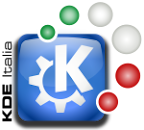4 febbraio 2014
EN - Back To The Future!
16 aprile 2012
IT - E adesso Mac
22 febbraio 2011
EN - About missing opportunities

I was at ISE this year, the big exibition in Amsterdam that cover most everything about AV and system integration. As a Linux fanboy and a Multimedia system integrator i was searching (among other things) plug and play media server, mainly movie servers. Yes, i can do (and i do) that kind of stuff with the gread godsend that XBMC is, but i spent lot of thime in this quest maily for curiosity. The result of my searches and my questions to exibitors was that Linux, and it's echosystem, are largerly appreciated in the AV industry but actually not being used. Why? That's what the engineer behind the hardware desing of one of those media server/players told me (not literarly) about Linux: "I started as a Linux engineer for this company, but when we started creating the new product line we had to switch to XP embedded because of the blu-ray reading issues with Linux".
That's pretty annoying. The open source echosystem have plenty of libraries and decoders/encoders to play all sort of media but we are losing the great opportunity to expand to this market because just for not being able to play blu-rays. But why the open source echosystem didn't work this time? Why some little AV manufacturer didn't work toghether to implement a lib to access blu-ray menues? I'm asking, not criticizing, i really would like to know why if i want to provide a professionally, manufacturer supported, media center i have to rely in something i don't trust nor like. Maybe some libraryes exist already, maybe i'm talking without knowing something important, if so please update me! But for the time being, and for what is my professional use of Media Center, the scenarios that i know are:
Movie server with big (raid/lvm) capacity directly connected to the AV receiver and a display/projector. This is the simplest and most usual installation, with a Linux box that runs everything and share the only media folder through the new via nfs or SMB to keep simple the connection from a Windows or Apple machine. XBMC remotely controlled via WiFi.
Customer ask a media center to play his files taken from his camcoder and files downloaded from internet and some movies: XBMC with or without library, on a Linuxbox. You share the main movies folder throug SMB and he can upload his content directly from his mac or windows box. If he want blu-ray content he must rip the disk with a windows application (lots of them are based on FFmpeg and are in his wall of shame) and put the resulting h.264 file in the network share.
Medium house with two tv rooms, no music, just Movies: A media server somewhere connected to a wired gigabit network. XBMC not mandatory here. Just an NFS Share for the clients connected to the TVs. Optionally XBMC have a sharing protocol or supports natively SMB. Not tested those possibilityes yet but will do soon. Plus, with a shared MySQL installation somewhere the clients can share the same database. The clients are configured to connect at boot to the NFS share and serve XBMC through the mounted directory. They can play DVDs locally (can they?) if DVD are the same region of the DVD player in the LinuxBox.
These are the main scenarios that came into my mind in few minutes. Lots more are possible, so why XBMC on Linux is not present in any form at ISE? Why i'm forced to see Media (movies and music) servers running XP embedded? Please share your thoughts!
